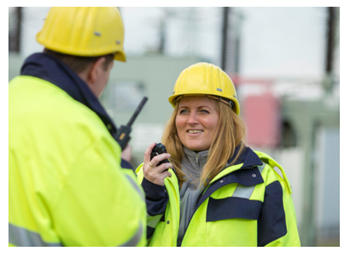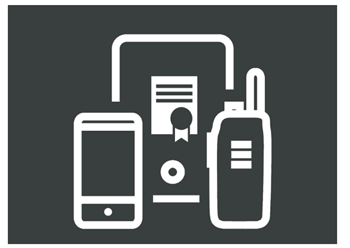Tips for Optimising Two Way Radio Performance
Two-way radios have been used for communication for almost 100 years and have become an essential tool for multiple businesses and industries. They are constantly updated with new features, but there are some simple steps you can take to ensure efficient and optimum radio performance. Different radio models require different maintenance and optimisation strategies, but the following tips will be useful regardless of your radio brand. By following these guidelines, you can make sure your two-way radios provide reliable communication throughout your business operations. 1. Choose the right two-way radio for your environment Different two-way radio models are designed for different purposes. The main factors for any organisation to consider are; Range, this is particularly important, as it determines how far the two-way radio can transmit a signal. Durability is also important, as it ensures that the two-way radio can withstand the rigors of the environment it will be used in. Battery life should be considered, as it will determine how long the radio can be used before needing to be recharged. Cost, be realistic about your budget and what features and functions you would like to see your two way radio system perform. Maintenance, consider the service plans offered. Many manufacturers offer bolt on service plans that can help reduce the cost of maintenance and repairs. With an approximate life span of 5-7 years it is important to choose the right model for your needs. Are you deploying them into a tough environment? The two way radio should be specifically designed for hazardous environments, and must be certified to be safe to use in areas with flammable gases and combustible dusts. Look for radios with a rugged construction and waterproofing to ensure they can withstand the wear and tear of everyday use. Whereas, in an education setting you may be considering more discrete communications, location tracking or integration with your telephone system. Read our frequently ask questions to find out more > 2. Use the right frequency band for your environment One of the first steps to take before purchasing a new two-way radio system is to determine the best frequency band for your needs. The reason behind this is to ensure you receive optimum results from your investment. By selecting the right frequency band for your radio system you can guarantee that it will support your workplace environment, thus increasing productivity and safety for your employees. If you are looking to understand more on this subject, read our post here > 3. Avoid Interference Make sure that your two-way radio broadcasts are not being overheard by other radio users outside of your organisation. An OFCOM radio licence guarantees that the user is operating their walkie talkie within the legal framework and it prevents interference from other users on the same frequency, as the licence holder is the only authorised user of that particular frequency. It also ensures that the user is operating their walkie talkie within the power output limits set by OFCOM. Find out more about OFCOM licences here > 4. Use genuine batteries Genuine batteries can provide more reliable and consistent performance than generic batteries because they are made to the exact specifications of the device for which they are intended, meaning that you won’t have to replace them as often, reducing both the cost and the environmental impact of battery use. They are also much safer to use as they are designed to withstand the heat and pressure on the device they are being used on. This can help to prevent fires and other accidents. 5. Use high quality accessories By selecting high quality accessories for your two way radio fleet they will provide you with the best performance, durability, and longevity. Quality accessories will also ensure that you get the most out of your device, allowing you to stay connected and make sure you can communicate without any issues, such as noise-cancelling audio accessories that are great at reducing outside noise and helping you focus on the task at hand. 6. Keep your radio clean Cleaning your radio regularly will keep it in top condition and ensure that it continues to function properly. Avoid using industrial cleaners or cleaning sprays on your radio as the chemicals could damage it. Wipe them down with a cloth and soft bristled brush to remove dust build-up (higher IP rated dirt and dust-resistant radios are available for those working in harsh conditions). In addition, educate your employees about how to store, use and maintain their radio properly. We have more information here about how to clean your two way radios >Visit the Radiocoms Systems Limited website for more information on Tips for Optimising Two Way Radio Performance





